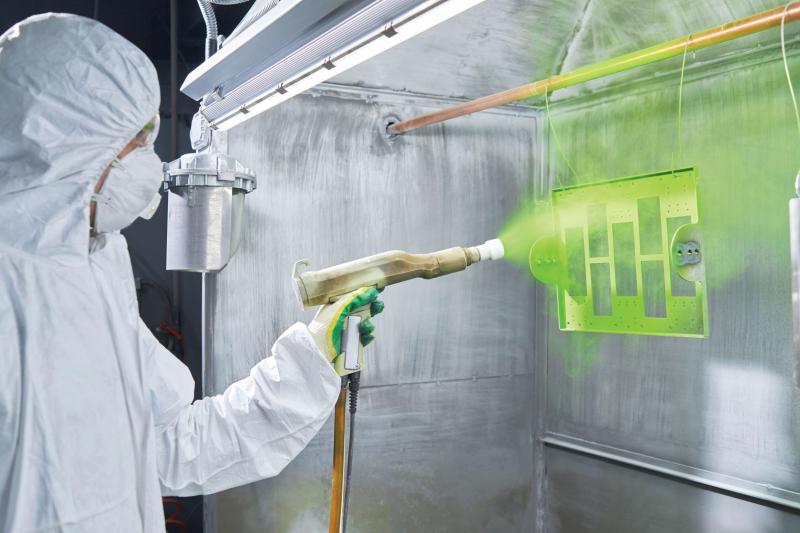Powder coating is a popular finishing process used in various industries such as automotive, appliances, and furniture manufacturing. This type of coating is applied as a free-flowing, dry powder and then cured under heat to form a hard, durable finish. Unlike traditional liquid painting, powder coating is applied electrostatically, which creates a more uniform and consistent coating. In this article, we will explore the science behind powder coating and how electrostatic charge and heat work together to create a durable finish. We will also discuss popular powder coat colors and the benefits of using chrome powder coat for a unique and eye-catching finish.
Electrostatic Charge: How it Works
The electrostatic charge is an essential component of the powder coating process. The powder particles are charged with static electricity, which creates a natural attraction between the particles and the grounded metal object being coated. The powder gun, which is used to apply the powder, has a negatively charged electrode, which charges the particles as they pass through the gun. The metal object being coated is grounded, creating an opposite charge, and the charged particles are attracted to the surface of the metal, evenly covering it with powder.
This electrostatic attraction is what sets powder coating apart from traditional liquid painting. With liquid painting, the paint is applied with a brush, roller, or spray gun, and the finish can be uneven, with drips and uneven coverage. With powder coating, the electrostatic charge ensures that the powder particles are evenly distributed across the surface of the metal object, creating a uniform and consistent coating.
Heat: How it Helps
Once the powder has been applied to the metal object, it is cured under heat, typically in an oven. The heat causes the powder to melt and flow together, forming a smooth, continuous coating. The curing process also chemically bonds the powder to the metal surface, creating a strong and durable finish.
The curing temperature and time can vary depending on the type of powder being used and the metal object being coated. For example, some powders may require a lower curing temperature, while others may require a higher temperature. It is essential to follow the manufacturer’s guidelines for the specific powder being used to ensure the best results.
Durability: How it’s Achieved
The electrostatic charge and heat work together to create a durable finish that is resistant to chipping, scratching, and fading. The electrostatic charge ensures that the powder particles are evenly distributed across the surface of the metal object, creating a uniform and consistent coating that is less likely to chip or crack.
The curing process also plays a crucial role in the durability of the finish. The heat causes the powder to melt and flow together, forming a smooth and continuous coating that is less likely to scratch or fade. The curing process chemically bonds the powder to the metal surface, creating a strong and durable finish that can withstand harsh environments and wear and tear.
Advantages of Powder Coating
Powder coating has several advantages over traditional liquid painting. Here are a few of the most significant benefits:
- Uniform and Consistent Finish: As previously mentioned, the electrostatic charge ensures that the powder particles are evenly distributed across the surface of the metal object, creating a uniform and consistent finish.
- Durability: Powder coating creates a durable finish that is resistant to chipping, scratching, and fading.
- Environmentally Friendly: Unlike liquid painting, powder coating does not contain solvents, which can be harmful to the environment. Additionally, the overspray from the powder coating process can be recycled and reused, reducing waste.
- Cost-Effective: Powder coating is a cost-effective option for finishing metal objects. Because the powder can be recycled and reused, there is less waste, which can result in cost savings.
Conclusion
Powder coating is a popular finishing process used in various industries due to its ability to create a hard, durable finish that can withstand harsh conditions. The science behind powder coating is fascinating, as the combination of electrostatic charge and heat creates a uniform and consistent coating that adheres to the surface of the material being coated. Additionally, powder coating offers a wide range of colors, and the use of chrome powder coat can create a unique and eye-catching finish that is sure to make a statement. The benefits of using powder coating over traditional liquid painting include enhanced durability, improved environmental impact, and reduced costs. Overall, powder coating is an excellent choice for anyone looking for a durable and long-lasting finish that can withstand harsh conditions. Do ensure you reach out to only a trusted company.

